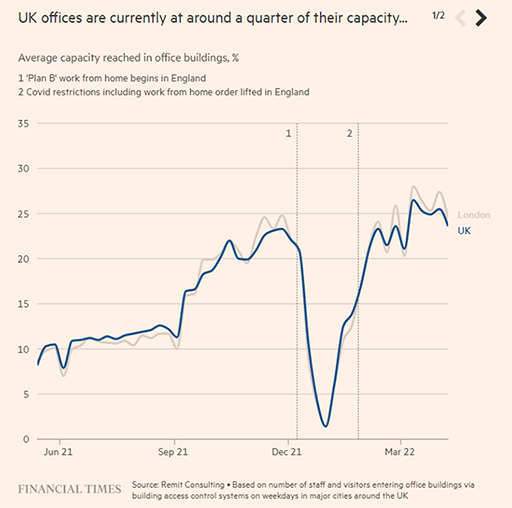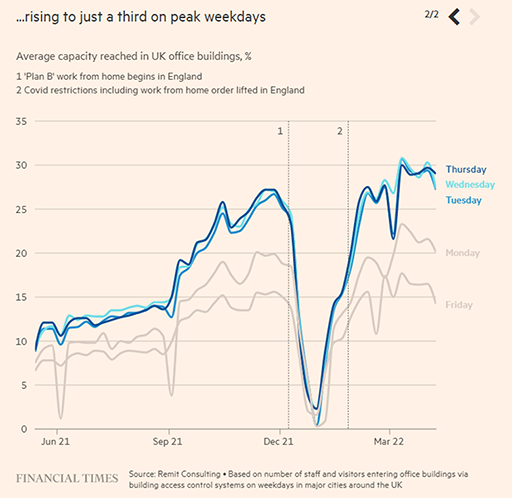5.1 Use of space – onsite and remote
As organisational structures evolve, and the workforce is dispersed between ‘on-site and remote’, organisations need to consider the use of space in both environments. The use of physical space on-site is likely to be reduced, and how it is used will change. Employees may not all be in the office with their team and may not need a permanent desk.
This poses challenges for organisations to plan for effective and efficient use of space that not only meets the needs of the organisation, but also that of individuals, especially those who have specific workspace requirements. Do teams/units need to be located together or are ‘hot desking’ areas sufficient? This decision will depend on how your organisation operates. For HEIs with students on campus the use of space is likely to remain similar to before the pandemic, but for distance learning HEIs, where fewer people may be on site, they are potentially faced with space being unused.
Organisations also now need to consider what their responsibility is for those who are based remotely, whose home-working environments may not be ideal. What is the basic entitlement that an employee can expect in terms of the equipment provided or financial support? Does the reduction in the cost of commuting offset other costs incurred with working remotely? Are all employees able to work in a safe environment? These are some of the considerations organisations need to weigh and ensure policies and processes provide clear guidance and manage expectations.
While there was an initial increase in people who were working remotely returning to ‘sites’, this appears to be plateauing, with organisations now seeing on average about a 25% usage of their space during the week. You can see from the figures below that the steady increases in those returning to office building and peak days.
For organisations monitoring use of buildings, tracking data will become critical to assist them in making informed decisions on how to design spaces for the future and where to invest in infrastructure.


While some organisations would like to see all staff return to site, the indications are that employees do not wish for this to happen. This is a complex issue for organisations to resolve: planning for less space being used; considering how ‘sites’ are designed for the future to allow new ways of working; and identifying what the needs of remote workers will be – e.g. do they want to stay at home or use local hubs, rather than travel to an organisation’s main base?
The change in working patterns, use of space and hybrid working requires careful thought, consideration of health and safety, to ensure inclusion and accessibility are catered for, but also lone working as people are dispersed throughout buildings or working remotely. How people come together face-to-face and what activities they do this for, where teams are not required to be together onsite, and managing hybrid meetings also needs to be planned.
In redesigning space, facilities and services, and how employees use the space, organisations must consider sustainability as well. The commitment to reach net zero by 2050 means all organisations need to reconsider how they can operate more sustainably and understand the implications and requirements for reaching the targets.
